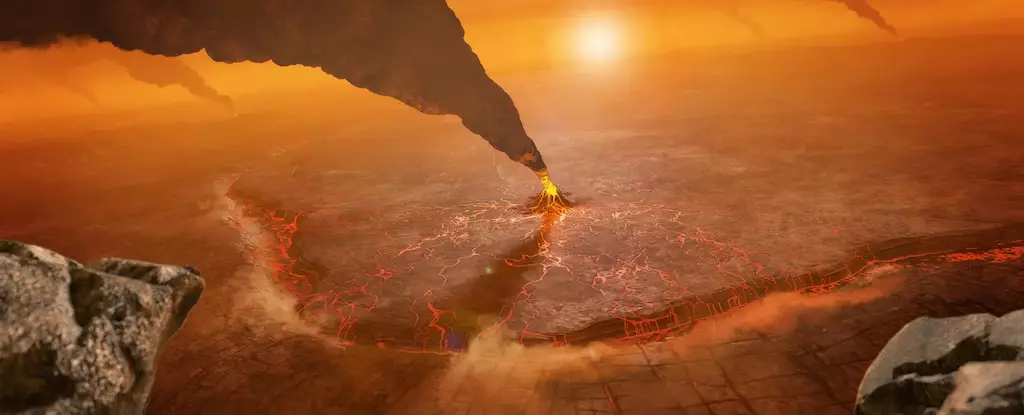Recent findings about Venus have sparked renewed interest in this often-overlooked planetary neighbor. Traditionally viewed as a hellish world composed mainly of sulfuric acid clouds and scorching temperatures, new insights suggest that it may share more similarities with Earth than previously understood. A closer examination of archived data from long ago reveals seismic processes reminiscent of Earth’s geology, suggesting that Venus is not just a dormant planet but rather an active one where dynamic surface transformations are occurring. This re-evaluation has the potential to reshape how we perceive the geological and climatological evolution of terrestrial planets.
The Allure of Coronae
At the heart of this research is the discovery of coronae—unique surface features that could hold the key to understanding Venus’s internal activity. Ranging in size and exhibiting a crown-like ring around a sunken center, coronae were initially mistaken for impact craters. However, recent research indicates a fascinating volcanic origin linked to the upward movement of molten material. This activity not only reveals the planet’s geological processes but also suggests that the forces shaping Venus might mirror the cathedral-like structures of Earth during its formative years, when plate tectonics had not yet carved its intricate mantle.
Rethinking Geophysical Mechanisms
Unlike Earth, which is covered by shifting tectonic plates actively reshaping the landscape, Venus operates on a different set of geophysical mechanisms. Through the analysis of gravitational and topographical data collected by NASA’s Magellan probe, scientists uncovered that 52 out of 75 identified coronae are likely fueled by hot, buoyant magma plumes. This situation occurs when less dense material is forced upward, causing deformation and surface uplift. Unlike Earth’s conventional subduction, Venusian activity seems to be characterized by a unique interaction of mantle plumes with its lithosphere, leading to horizontal stress rather than the vertical movement we associate with plate tectonics.
The Double-Edged Sword of Tectonics
Interestingly, the tectonic processes that researchers have theorized for Venus do bear some resemblance to mechanisms in play on our own planet. For instance, the concept of lithospheric dripping—where material from the crust melts and subsequently falls into the interior—parallels certain tectonic behaviors found on Earth, albeit undergoing different dynamics. As plumes rise and interact with the surface, they create conditions conducive to such dripping, which might function similarly, accentuating the idea of Venus as a more dynamic entity than previously believed.
The Road Ahead for Venus Exploration
The hostile environment of Venus presents significant challenges for exploration, including extreme pressure, intense heat, and corrosive atmospheric conditions. These formidable barriers have stunted our ability to conduct robust geological surveys on the planet’s surface. However, given the wealth of knowledge that can be derived from studying coronae, scientists argue that intensified focus on these features is warranted. The existence of active geological processes illuminates the idea that exploring Venus could yield crucial insights not just into its history but into the broader context of planetary evolution in our solar system.
Correlating Past and Present
Reflecting on the correlative aspects of Earth’s geological history, the researchers emphasize that studying coronae could unlock secrets of our own planet’s early formation stages. If coronae on Venus echo the formative features of Earth, then our sibling planet might serve as a time capsule for understanding how geology evolves in the absence of established plate tectonics. This interplanetary comparison could provide valuable context for the conditions that engender the development of life or constrain it to particular planetary environments.
As the debate surrounding Venus intensifies, it becomes increasingly clear that the stories told by our solar system’s bodies are interconnected. By digging deeper into the phenomena observed on Venus, we not only discover the secrets held within its enigmatic crust but also glean lessons applicable to planetary sciences broadly. The journey into understanding Venus is not just an exploration of an alien world but an opportunity to illuminate the tales spun across the planets, including our very own. The implications of such discoveries might reshape our views, urging us to examine other celestial bodies with a nuanced lens that seeks to understand their complex and often surprising narratives.


Leave a Reply